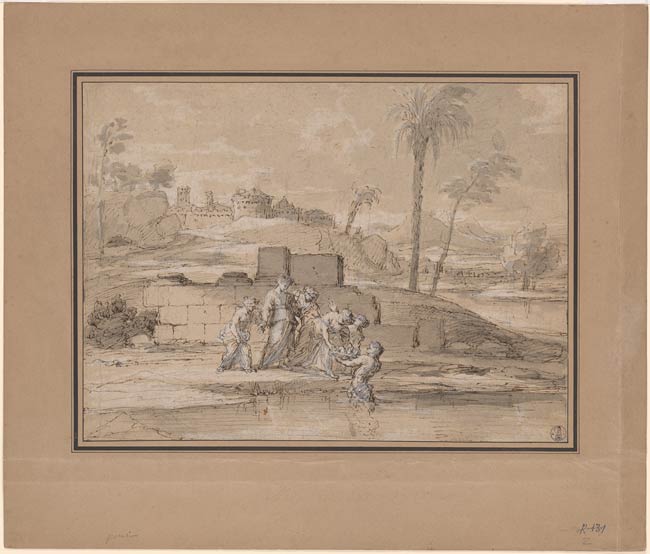
Watermark: not visible through lining.
A sculptor turned painter from Lyon, Blanchet joined the circle of French and Italian artists around Poussin when he arrived in Rome in 1645. After nearly a decade in Rome, he returned to Lyon, but he continued to rely on his Italian experiences. In the present sheet a loosely drawn riverine landscape is the setting for the discovery by Pharaoh's daughter of the infant Moses in a basket floating on the Nile. This pictorial sheet seems to be an independent rendering of the subject, which Blanchet also explored in a painting of ca. 1655 (Louvre, Paris). The preliminary study for the painting, also in the Louvre, is executed in red chalk and pen-and-ink in a schematic manner and squared for transfer, representing a very different aspect of Blanchet's draftsmanship. The Louvre composition reverses the figural group, which is seen at closer range and without the expansive landscape of the Morgan's sheet. Curiously, the present drawing was attributed to Poussin before Peter Dreyer recognized it as by Blanchet.
Inscribed variously on old mount, below center lightly in graphite, "Nicolas Poussin"; at lower left, in graphite, "pousin", at the right "Z", and numbered above this "P 131"; on verso at lower right, in an old hand, in pen and brown ink, "n. poussin"; in another hand in pen and brown ink, "BP 38"; in graphite, "N. 15, 125, 205 / 308"; in blue pencil, "14".
Poussin, Nicolas, 1594?-1665, Formerly attributed to.
Dhikeos, Nikos, former owner.
